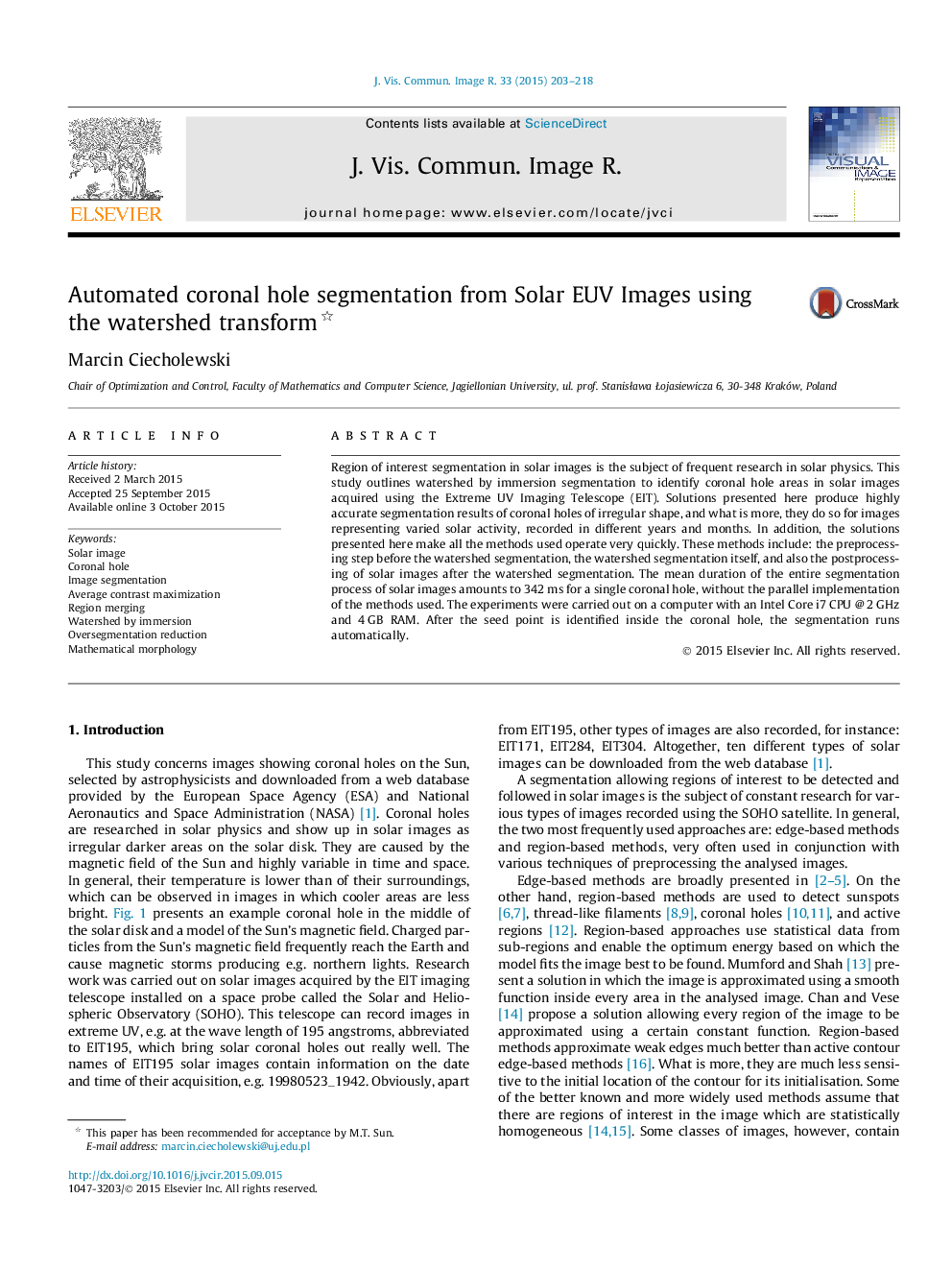| Article ID | Journal | Published Year | Pages | File Type |
|---|---|---|---|---|
| 528556 | Journal of Visual Communication and Image Representation | 2015 | 16 Pages |
•After the seed is indicated, the segmentation process progresses automatically.•A new algorithm for merging regions into the output mask of the coronal hole.•The average time of segmentation of a single coronal hole is 342 ms.•Based on the experiments completed, Dice’s index averages 89%.•High accuracy of segmentation results for coronal holes of irregular shape.
Region of interest segmentation in solar images is the subject of frequent research in solar physics. This study outlines watershed by immersion segmentation to identify coronal hole areas in solar images acquired using the Extreme UV Imaging Telescope (EIT). Solutions presented here produce highly accurate segmentation results of coronal holes of irregular shape, and what is more, they do so for images representing varied solar activity, recorded in different years and months. In addition, the solutions presented here make all the methods used operate very quickly. These methods include: the preprocessing step before the watershed segmentation, the watershed segmentation itself, and also the postprocessing of solar images after the watershed segmentation. The mean duration of the entire segmentation process of solar images amounts to 342 ms for a single coronal hole, without the parallel implementation of the methods used. The experiments were carried out on a computer with an Intel Core i7 CPU @ 2 GHz and 4 GB RAM. After the seed point is identified inside the coronal hole, the segmentation runs automatically.
